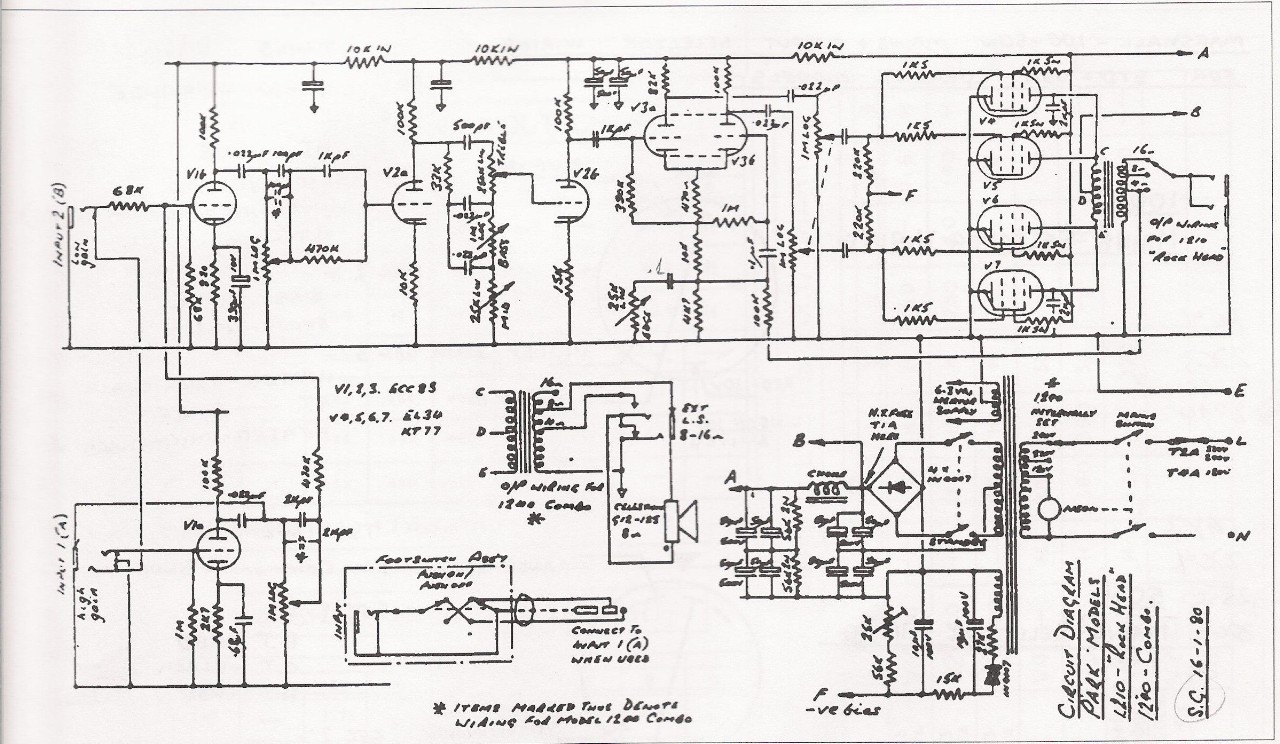Hi. After googling many hours, of course I end up asking here. I'm sure this question was made before but I couldn't get the answer by myself so here I am...
I'm very newbie to the tubes, electronics and amps world (and little english too) so be patient please
I'm kind of confused about how to wire a low gain and high gain inputs in an amp.
What I did, which I presume it's wrong, is to keep the high gain input as it was and to wire the new low gain input (I sacrificed the low sensitivity input because I don't use it) after the coupling cap of the first triode but before the tone stack and volume pot that connects to the second triode. So now the high gain input goes through to both triodes of the 12ax7 preamp and the low gain just goes through only one of the triodes of that tube. It works but I had to disconnect the earth from the low gain jack's tip because the first plate shorts to ground! [OF COURSE you dumbass
 ]
]
I supose this is not the best way to do it so could you help me here please!?
This is what I did:

Second, looking in this Marshall schematics:
http://www.drtube.com/schematics/marshall/jcm800pr.gif
In the 1987 circuit, the 470k after the volume pot is mixing both inputs like I want to do in my amp or am I wrong?
In the 2204, the 0.022 uF between the first triode plate and the low input input jack is coupling both triodes and connecting the inputs like my schematic or am I wrong?
I'm very newbie to the tubes, electronics and amps world (and little english too) so be patient please

I'm kind of confused about how to wire a low gain and high gain inputs in an amp.
What I did, which I presume it's wrong, is to keep the high gain input as it was and to wire the new low gain input (I sacrificed the low sensitivity input because I don't use it) after the coupling cap of the first triode but before the tone stack and volume pot that connects to the second triode. So now the high gain input goes through to both triodes of the 12ax7 preamp and the low gain just goes through only one of the triodes of that tube. It works but I had to disconnect the earth from the low gain jack's tip because the first plate shorts to ground! [OF COURSE you dumbass

 ]
] I supose this is not the best way to do it so could you help me here please!?
This is what I did:
Second, looking in this Marshall schematics:
http://www.drtube.com/schematics/marshall/jcm800pr.gif
In the 1987 circuit, the 470k after the volume pot is mixing both inputs like I want to do in my amp or am I wrong?
In the 2204, the 0.022 uF between the first triode plate and the low input input jack is coupling both triodes and connecting the inputs like my schematic or am I wrong?

 ) then here is a concept schematic. There probably would be a bit of switch pop as you flick the DPDT (which a large snubber resistor across each of the two sets of poles might suppress, or alternatively smallish high voltage plate bypass caps might suppress), and you might have to lay this out astutely to minimise unwanted coupling. Just a suggestion, not saying it will work perfectly first time.
) then here is a concept schematic. There probably would be a bit of switch pop as you flick the DPDT (which a large snubber resistor across each of the two sets of poles might suppress, or alternatively smallish high voltage plate bypass caps might suppress), and you might have to lay this out astutely to minimise unwanted coupling. Just a suggestion, not saying it will work perfectly first time.

Comment